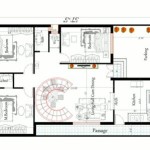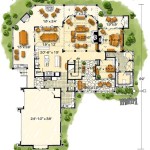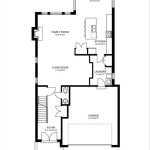What Is Elevation On A House Plan?
When it comes to understanding the blueprints of your dream home, it's essential to familiarize yourself with the various components that make up the plan. Among these components, elevation plays a crucial role in visualizing and understanding the structure of your future dwelling. In this comprehensive guide, we'll delve into the concept of elevation in house plans, exploring its significance and providing insights into its interpretation.
What Is Elevation?
In architectural terms, elevation refers to a two-dimensional representation of a building's exterior. It's a vertical projection that depicts the height, shape, and design elements of a structure as if viewed from a specific direction. House plans typically include four elevations: front, back, left, and right.
Elevations serve as visual aids, allowing architects and homeowners to visualize the exterior appearance of the house and assess its overall aesthetics. They provide valuable information about the placement of windows, doors, balconies, and other architectural features.
Significance of Elevation in House Plans
Elevations are essential components of house plans for several reasons:
- Exterior Visualization: Elevations enable you to visualize how your house will look from all sides, helping you make informed decisions about its overall appearance.
- Design Planning: By studying the elevations, architects and homeowners can plan the placement of windows, doors, and balconies to optimize natural light, ventilation, and views. li>Construction Guidance: Elevations serve as blueprints for contractors during the construction process, ensuring that the house is built according to the intended design.
How to Read an Elevation
Understanding how to read an elevation is crucial for interpreting house plans accurately. Here are some tips:
- Identify the Direction: Elevations are typically labeled with the direction they represent (e.g., front elevation, back elevation).
- Study the Lines: Elevations are made up of lines that represent the edges and surfaces of the building. Solid lines indicate visible edges, while dashed lines represent hidden edges.
- Interpret Symbols: Elevations often include symbols to represent windows, doors, balconies, and other features. Familiarize yourself with these symbols to understand the layout of the house.
Conclusion
Elevation is a crucial aspect of house plans, providing valuable insights into the exterior appearance, design, and construction of your future home. By understanding the significance and interpretation of elevations, you can actively participate in the planning process and make informed decisions about your dream house. Remember, elevations are dynamic tools that can help you visualize, plan, and construct a stunning and functional home that meets your unique needs.

How To Read House Plans Elevations

Scheme Of The Tested Single Family House A Front Elevation B Scientific Diagram

Architecture House Plan And Elevation Complete Drawing Cadbullb Bungalow Floor Plans Building Designs

Small House Left Right And Perspective Elevation With Ground Floor Plan Details Dwg File Simple Plans One

Pin On My Saves

Floor Plan And Elevations For The New House Wildfire Interiors

How To Draw Elevations

Plan And Elevation Of The Test House A Floor Ground Scientific Diagram

Small House Plans Home Plan 3 Bedrms 2 Baths 1355 Sq Ft 136 1017

Floor Plan Of The House With Elevation Details In Dwg File Which Provide Detail Front Side Ele Plans Drawing Simple








